|
The Institute incorporates four Multiple Access Centers:
1. MULTIPLE ACCESS CENTER FOR SATELLITE MONITORING OF THE ENVIRONMENT OF FEB RAS
Head of the Center - Academician V.A. Levin
Main research directions
Monitoring of dynamic objects and processes of the ocean and the atmosphere on the basis of satellite monitoring of the environment to render information support of scientific research and other activities of the FEB RAS Institutes and other organizations in the field of ocean and atmosphere physics, oceanology, meteorology and marine biology.
Principal results
- Supply of instantaneous, average and compositional fields of: sea surface temperatures, thermal structures, surface currents velocities, dynamic and spatial characteristics of oceanic eddies, thermal images of land, clouds, etc. through www.satellite.dvo.ru.
- Satellite information provided by the Center is successfully used by the TINRO (Pacific Institute of Fishing Industry and Oceanography) for making monthly, quarterly and yearly forecasts of oceanological conditions, as well as forecasts of oceanological conditions of fishing: herring, pollack, salmon, saury and king crab (fishing season forecasts).
- In fact, all yearly oceanographic overseas expeditions, both arranged by FEB RAS and international ones, get online satellite information support for pinpoint navigation to the objects under study - eddies, flows, currents, as well as for scientific research.
- Within the framework of the UNESCO IOC/WESTPAC/NGSST project a method was created to calculate thermal oceanic structures in the form of dominant orientations of brightness contrasts used for estimating directions of surface current speed and automatic eddy recognition.
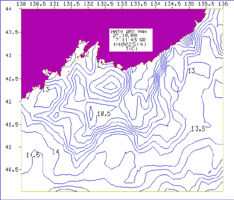
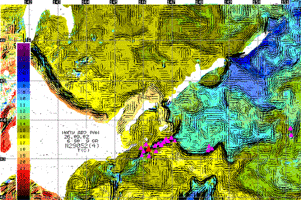
2. MULTIPLE ACCESS CENTER "FAR EASTERN CENTER FOR SOLID BODY SURFACE DIAGNOSTICS"
Head of the Center - Corresponding Member of RAS A.A. Saranin
Main research directions
Experimental investigations of the composition, atomic and electronic structure of the surfaces of solid bodies, thin films and low-dimensional structures on semiconductor and dielectric substrates; the conductivity, mobility and concentration of carriers in such systems, as well as their optical properties, structure and morphology both in ultra-high vacuum and in the open air. Research into the formation processes, structure and properties of submonolayer films (surface phases) of adsorbates on the surface of semiconductor crystals.
Analytical equipment
The Center has more than ten ultra-high vacuum installations for investigating the structure and properties of solid bodies. Principal investigation methods are as follows:
- Auger electronic spectroscopy.
- Low-energy electron diffraction.
- High-energy electron diffraction.
- Scanning tunnel microscopy.
- Atomic force microscopy.
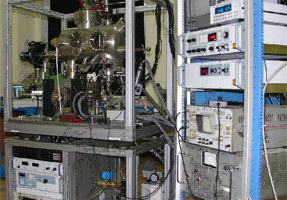
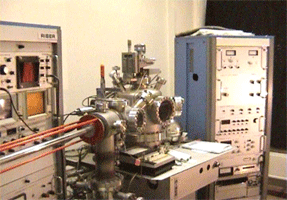
Principal results
- Ordered magic cluster arrays of Al on Si(111)7x7 and of In on Si(100)2x1 have been found.
- The phenomenon of In magic cluster doping on Si(100) has been discovered.
- An array of nanoelements in the form of silicon nanotubes doped by beryllium atoms which appeared as a result of the interaction between beryllium and Si(111) surface has been found.
- Low-temperature phase changes in Tl/Si(100) and Tl/Ge(100) systems were discovered.
- A research was made into molecular beam epitaxy of silicon on Fe disilicide islands formed on the surface of Si(111)7x7 and Si(100)2x1 at 600-800 C. Optimal growth temperature (700 C) on the surface of Si(100) has been determined and data on the structure of silicon and embedded -FeSi2 nanocrystallites (NCs) for the both surfaces have been obtained.
- Phonon structure of ingrown multi-layer samples has been investigated on the basis of the analysis of 2-phonon and 3-phonon resonances in silicon and Mg2Si.
- An investigation has been made into the morphology, optical properties, crystal and electronic structure of monocrystal silicon after plasma treatment depending on the initial tension of the magnetoplasma compressor (MPC). First data have been obtained on electronic structure parameters and parametric variations in the crystal structure of silicon after its treatment with plasma flux.
3. CENTER OF MULTIPLE ACCESS TO THE UNIQUE FEB RAS ANALYTICAL EQUIPMENT "FAR EASTERN COMPUTING RESOURCES"
Head of the Center - Dr. Sc. (Phys.-Math.), Professor E. A. Nurminsky
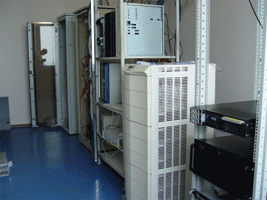
Main research directions
Rendering high-performance computing services for solving heavy-duty tasks of mathematical modeling and data processing.
Basic equipment
- Multiprocessor computer complex MBC-1000/17.
- Multiprocessor computer complex MBC-1000/16.
- Computer cluster ALEPH.
- High-performance workstation HP 6500 RX.
- Disc system HP StorageWork with the capacity of up to 1 TB.
Center's Users
Institutes of FEB RAS and Universities of Vladivostok.
4. CENTER "LASER METHODS OF INVESTIGATING CONDENSED MEDIA AND BIOLOGICAL OBJECTS AND ENVIRONMENTAL MONITORING" (MAC LAMI)
Head of the Center - Corresponding Member of RAS Yu. N. Kulchin
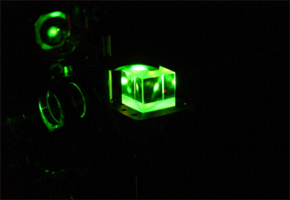
Main research directions
- Investigation into optical properties of natural and artificial nanostructures and into the interaction between laser radiation and nanostructures.
- Development of new laser methods of creating nanomaterials.
- Investigation into the interaction between laser radiation and biological objects.
- Application of laser spectroscopy methods for investigating condensed media, including the development of new laser research technologies.
- Application of laser technologies for atmospheric and oceanic probing, including the development of new laser methods.
Principal results
- Research was made into the passage of aerosol to the water area of Peter the Great Bay and to the atmosphere above the city of Vladivostok in the period of sandstorms in the Gobi desert in 2005-2006. Aerosol concentration during the most active period was estimated, and aerosol paths (altitudinal distribution) were determined.
- Sub-satellite lidar measurements are taken. A comparative analysis of aerosol probing data obtained with a MODIS scanner and with a space lidar installed on the CALIPSO satellite is made. The works are performed within the framework of the international project No. B-1063 "Atmospheric Aerosol and Ozone Monitoring in the Commonwealth of Independent States" being implemented by the International Science and Technology Center (ISTC) using the lidar station network (Cis LiNet).
- In the Center's lidar station an ozone lidar is being installed to measure the altitudinal distribution of the concentration of tropospheric and stratospheric ozone and meteorological parameters of the atmosphere.
- The lidar station is a part of the CisNet lidar network, which operates within the international ISTC project.
- A brand new class of silicon sponge spicula biocrystals was discovered and investigated.
- A research was made into the processes of dynamic scattering of coherent radiation in liquid-phase nanocomposites.
|